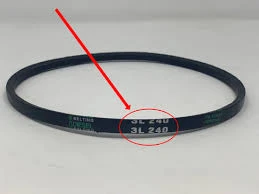- Arabic
- French
- Russian
- Spanish
- Portuguese
- Turkish
- Armenian
- English
- Albanian
- Amharic
- Azerbaijani
- Basque
- Belarusian
- Bengali
- Bosnian
- Bulgarian
- Catalan
- Cebuano
- Corsican
- Croatian
- Czech
- Danish
- Dutch
- Afrikaans
- Esperanto
- Estonian
- Finnish
- Frisian
- Galician
- Georgian
- German
- Greek
- Gujarati
- Haitian Creole
- hausa
- hawaiian
- Hebrew
- Hindi
- Miao
- Hungarian
- Icelandic
- igbo
- Indonesian
- irish
- Italian
- Japanese
- Javanese
- Kannada
- kazakh
- Khmer
- Rwandese
- Korean
- Kurdish
- Kyrgyz
- Lao
- Latin
- Latvian
- Lithuanian
- Luxembourgish
- Macedonian
- Malgashi
- Malay
- Malayalam
- Maltese
- Maori
- Marathi
- Mongolian
- Myanmar
- Nepali
- Norwegian
- Norwegian
- Occitan
- Pashto
- Persian
- Polish
- Punjabi
- Romanian
- Samoan
- Scottish Gaelic
- Serbian
- Sesotho
- Shona
- Sindhi
- Sinhala
- Slovak
- Slovenian
- Somali
- Sundanese
- Swahili
- Swedish
- Tagalog
- Tajik
- Tamil
- Tatar
- Telugu
- Thai
- Turkmen
- Ukrainian
- Urdu
- Uighur
- Uzbek
- Vietnamese
- Welsh
- Bantu
- Yiddish
- Yoruba
- Zulu
Nov . 12, 2024 09:20 Back to list
timing belt and chain
Understanding Timing Belts and Chains in Automotive Engineering
When it comes to the internal workings of an engine, the timing belt and timing chain play crucial roles in ensuring that everything runs smoothly. Both components are essential for synchronizing the engine's camshaft and crankshaft to ensure that the engine’s valves open and close at the correct times during each cylinder's intake and exhaust strokes. Understanding the differences, advantages, and maintenance needs of timing belts and chains can be invaluable for car owners and anyone interested in automotive engineering.
Timing Belts Characteristics and Advantages
Timing belts are made from reinforced rubber, often combined with nylon or other materials to enhance durability and performance. They are typically quieter in operation compared to their chain counterparts, ensuring a smoother ride for passengers. The primary advantage of a timing belt is its lightweight nature, which helps improve overall engine efficiency. Additionally, timing belts are usually less expensive to manufacture and replace, making them a cost-effective option for many vehicle types.
Despite their advantages, timing belts have a relatively limited lifespan. Most manufacturers recommend replacing them every 60,000 to 100,000 miles, depending on the vehicle make and model. Neglecting to replace a worn or damaged timing belt can lead to severe engine problems, including catastrophic failure. If the timing belt breaks, it can cause the engine's pistons to collide with valves, resulting in extensive and expensive damage.
Timing Chains Characteristics and Advantages
Timing chains, on the other hand, are constructed from metal links, offering durability and a longer lifespan than timing belts. Unlike belts, timing chains are less prone to stretching and do not require replacement as frequently. In fact, many timing chains can last the lifetime of the engine, which translates into substantial savings in maintenance costs.
timing belt and chain

However, timing chains are not without their drawbacks. They tend to be heavier and noisier than timing belts, producing a discernible mechanical sound as they operate. The additional weight can also slightly impact engine efficiency. Timing chains may require periodic maintenance, such as checking for proper tension and alignment, and they can suffer from wear due to oil sludge if the engine is not properly maintained.
Key Differences Between Timing Belts and Chains
The choice between using a timing belt or a timing chain often comes down to manufacturer preferences and engineering design. Timing belts are usually found in smaller engines, where weight and noise are critical considerations. Conversely, timing chains are more common in larger, heavier engines, where durability and longevity are prioritized.
Another vital difference is the method of operation. Timing belts typically rely on tensioners to maintain adequate tension throughout their lifespan. If the tensioner fails, it can lead to belt slippage or failure. Timing chains, in contrast, use a system of sprockets, gears, and tensioners that ensure tighter engagement and less slippage. Nevertheless, if a timing chain does wear out or fail, it can be a more complex and costly repair due to its positioning and the need for specialized tools.
Conclusion
In conclusion, both timing belts and timing chains serve the essential function of synchronizing engine components, contributing significantly to the overall performance and efficiency of an engine. Understanding the differences between them helps vehicle owners make informed decisions about maintenance and repair. Whether dealing with a timing belt or a chain, regular inspections and adherence to manufacturer recommendations are crucial in preventing catastrophic engine failures. While it may seem minor, the choice between a timing belt and a timing chain significantly impacts vehicle performance, maintenance costs, and overall engine longevity.
-
Upgrade Power Steering Pump Belt for Smooth, Quiet Operation
NewsAug.27,2025
-
Precision Timing Belt & Chain: Engine Performance & Durability
NewsAug.26,2025
-
Precision Lathe Drive Belts: Durable & Reliable Performance
NewsAug.25,2025
-
84.5 Serpentine Belt: Durable & Precision Fit for Your Engine
NewsAug.24,2025
-
Premium Ribbed Drive Belts for Quiet Power Transmission
NewsAug.23,2025
-
High-Performance Vehicle Timing Belt for Engine Precision
NewsAug.22,2025

